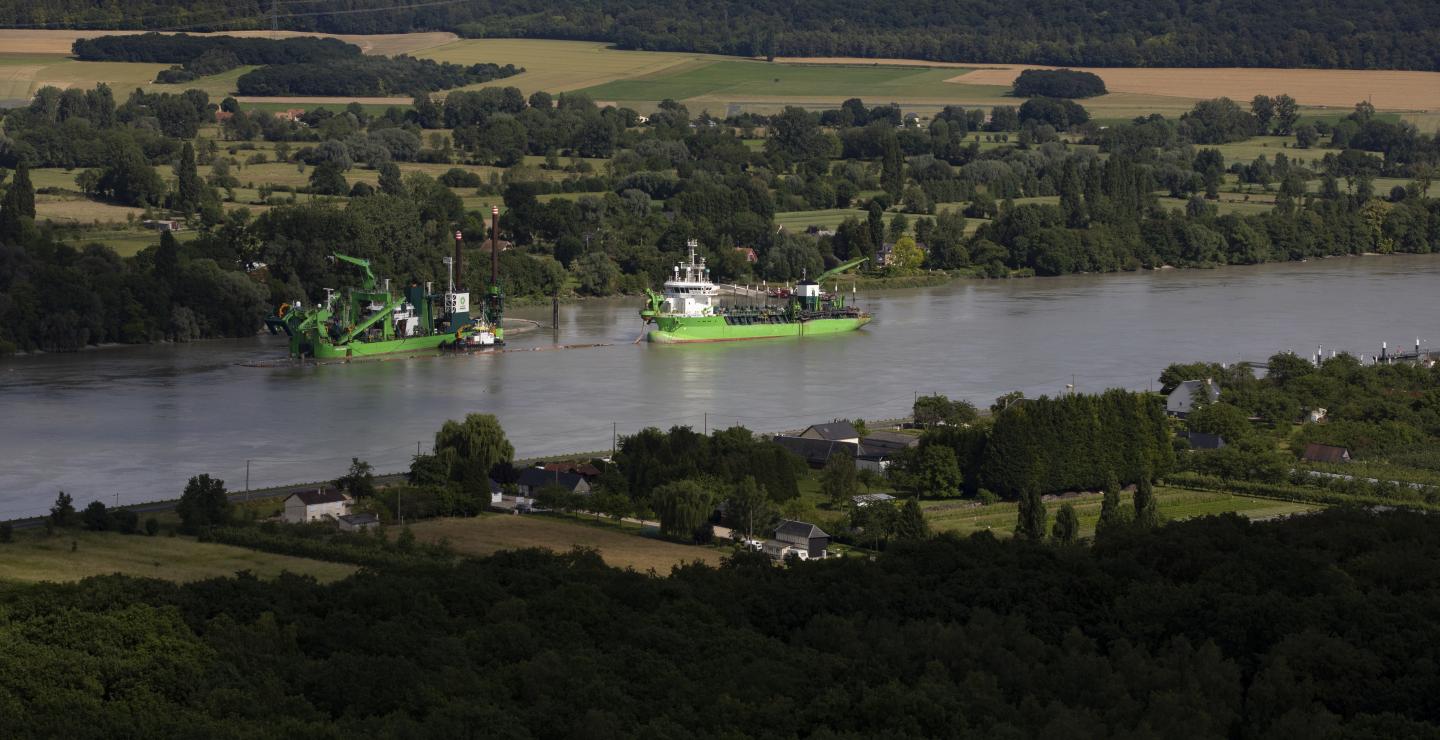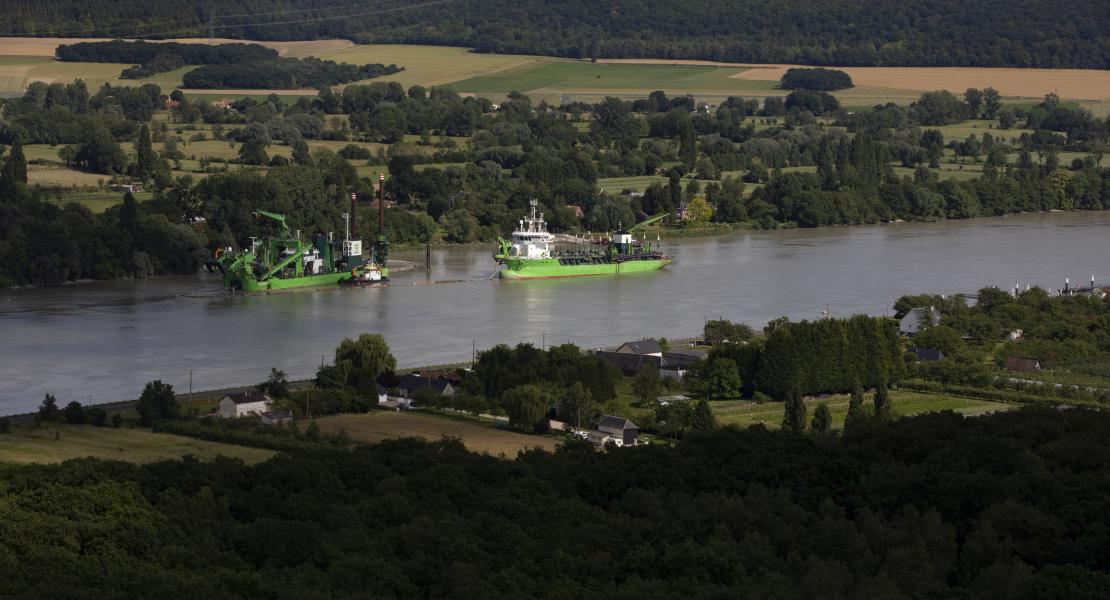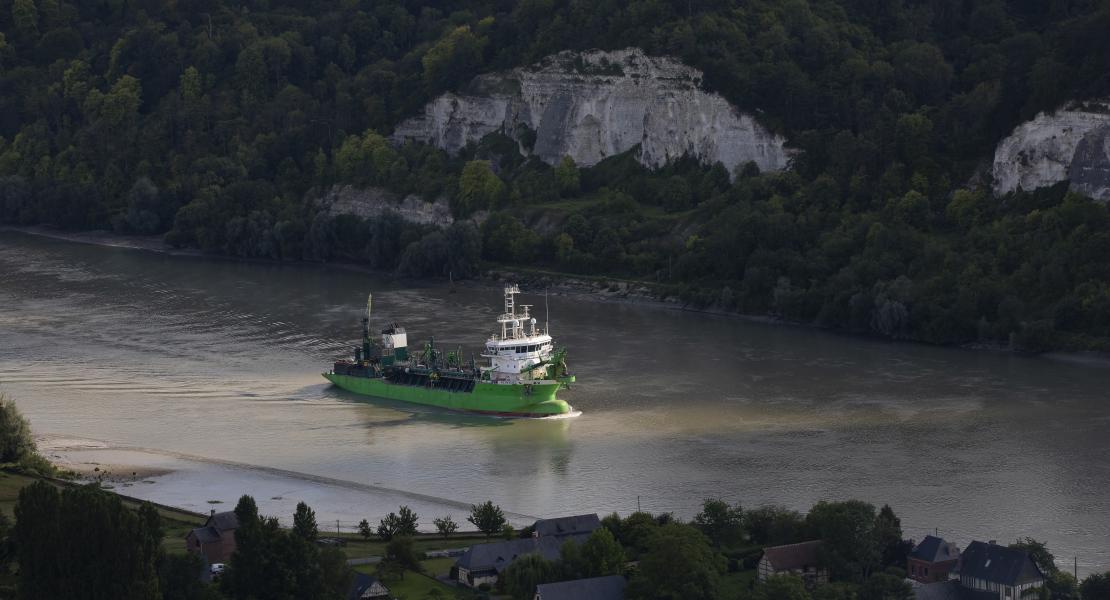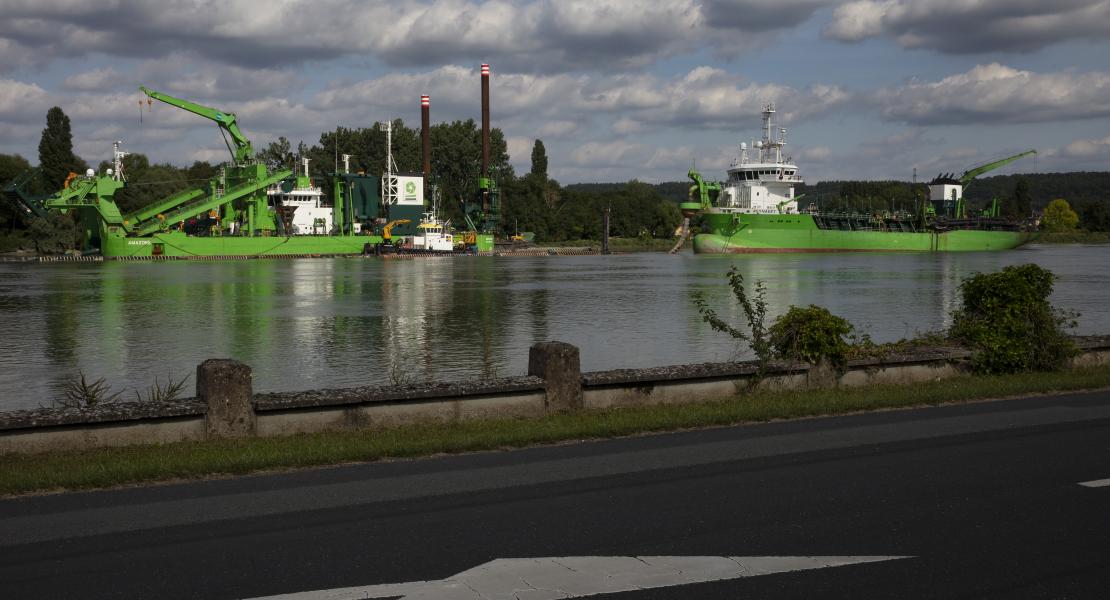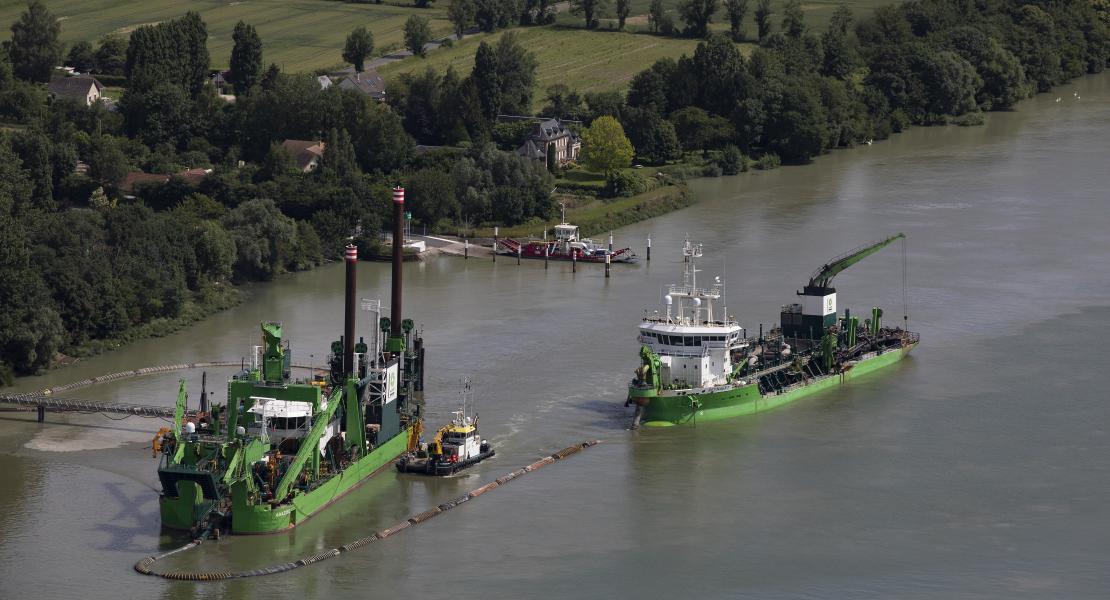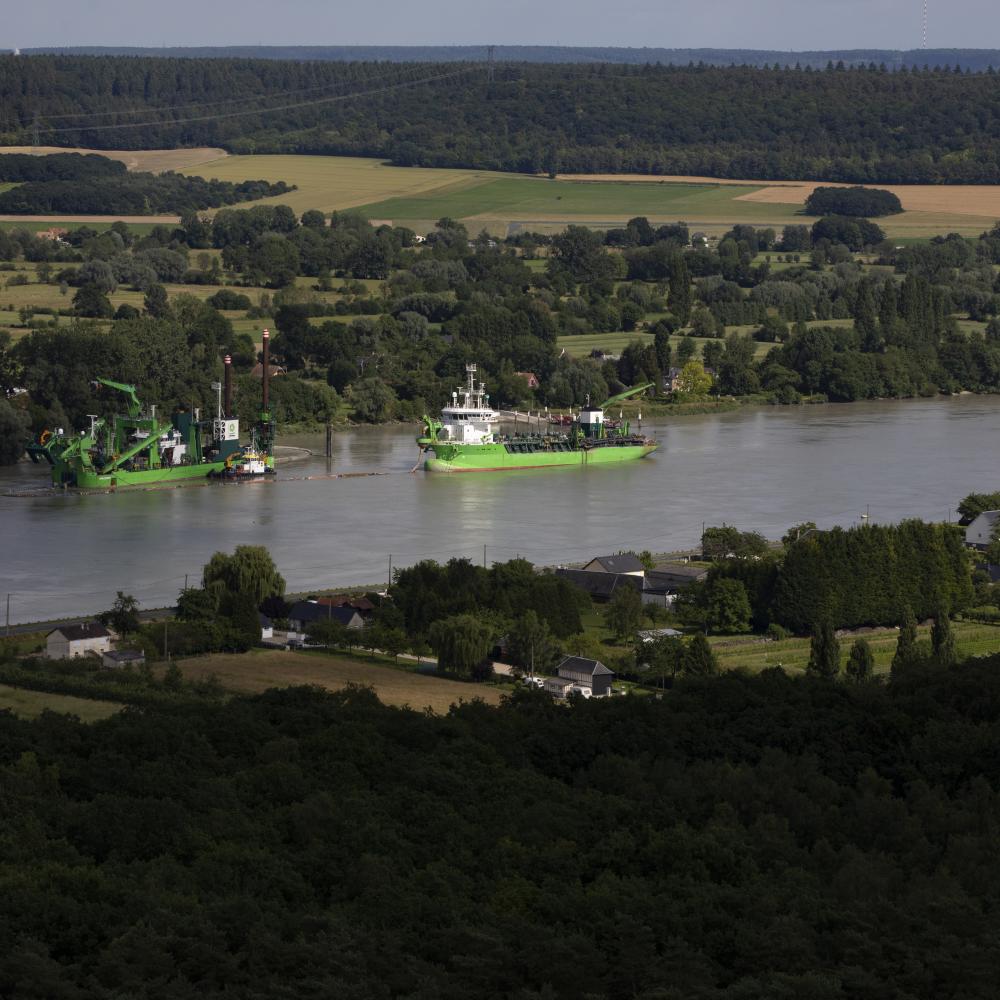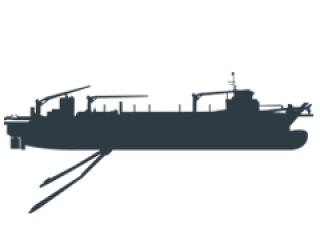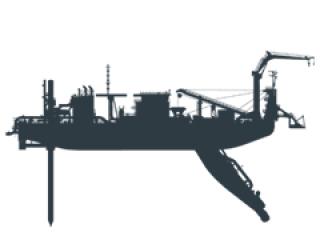The purpose of the improvement project relating to the access channels of the Port of Rouen is to deepen the River Seine to increase the admissible draught of ships by one metre. The Seine’s navigational channel had to be deepened in various sections between Rouen and Courval, representing a stretch of more than 46 km. The navigational width of the channel will then be increased from -6.50 m CMH to -8.50 m CMH.
Dredged materials were hydraulically pumped and brought to dry land and discharged in three locations in Moulineaux and Saint-Wandrille for recycling and in the Marais ballast pit at Yville-sur-Seine for filling. In certain emergency situations, some of the materials could be piled in certain specific immersion zones in the Seine.
The nature of the dredged materials is highly variable, ranging from clay to gravel, more or less loosely packed. Some of the zones in particular underwent a specific DSD pre-treatment to disintegrate the materials before their removal by a suction dredge.
